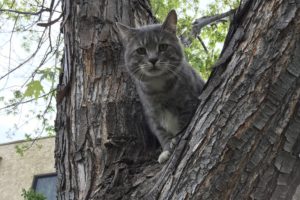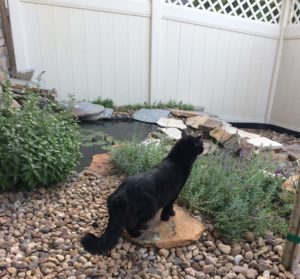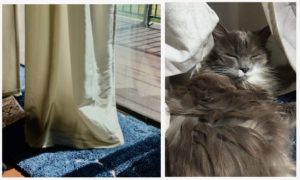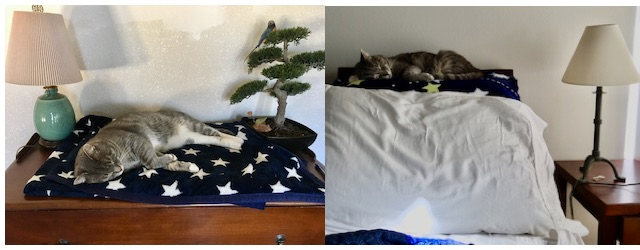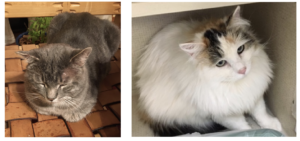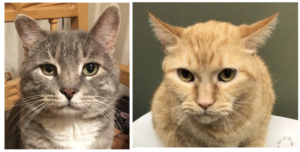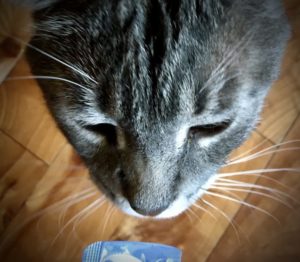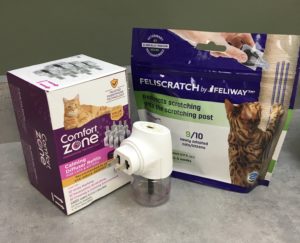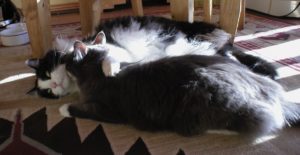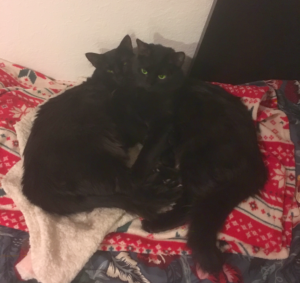The Cat Friendly Home: Resources – Food and Water
Our cats’ closest relative is the African Wildcat. What is the wildcat’s day like?
The wildcat’s day has already started by the time the sun starts to come up.
the wildcat’s excellent night vision allows him to hunt at night although the rodents that make up most of his diet are mainly active at dawn and dusk.
Small Frequent Meals
The wildcat must remain on the prowl at dawn and dusk since he needs to eat about 8-10 mice daily or starve.
Variety is the Spice of Life
If our wildcat is lucky, he may catch the occasional rabbit or antelope fawn. Insects, lizards, and snakes are also on the menu.
The Solitary Hunter Dines Alone
Once our wildcat catches a morsel, he will take it somewhere he can eat without becoming someone else’s meal – some place quiet, secluded and protected.
As the sun becomes higher in the sky, our wildcat will find a cool, secluded place to rest during the day before resuming the hunt at dusk.
At the Waterhole…
Not Much Need to Drink…
A wildcat gets most of her water from the prey she eats; her kidneys are very efficient.
Wide, Flat Watering Places..
If she does stop at a waterhole, she will choose a place where she can use the water as a mirror to see if anything is coming up behind her.
No Drinking While Eating…
She does not drink while eating nor does she bring food to the waterhole. She avoids contaminating the water source with the guts of her prey.
Our “Wildcats” at Home…
Like his wildcat relative, your cat gets most of his nutrition from meat. He is designed to eat 8-10 small meals a day and be on the prowl most of his waking hours, looking for food. He is hardwired to hunt, regardless of how well fed he is. Cats have been known to stop eating to pursue prey.
Feeding behavior…
It is normal for your cat to eat a few mouthfuls, go away and return later to eat more. Of course, this may be a problem if another cat eats all the food. One way to dispense small meals is to use several puzzle feeders located at different locations in your house. Your cat “prowls” around looking for feeders

and collecting snacks along the way (See Your Cat’s Diet)
It is hard to dispense with “meal time” feeding, especially with canned food. If you have more than one cat, separating each cat and his food dish can help with aggression and gorging at feeding times. Ideally, each cat should be out of sight of the other cats.
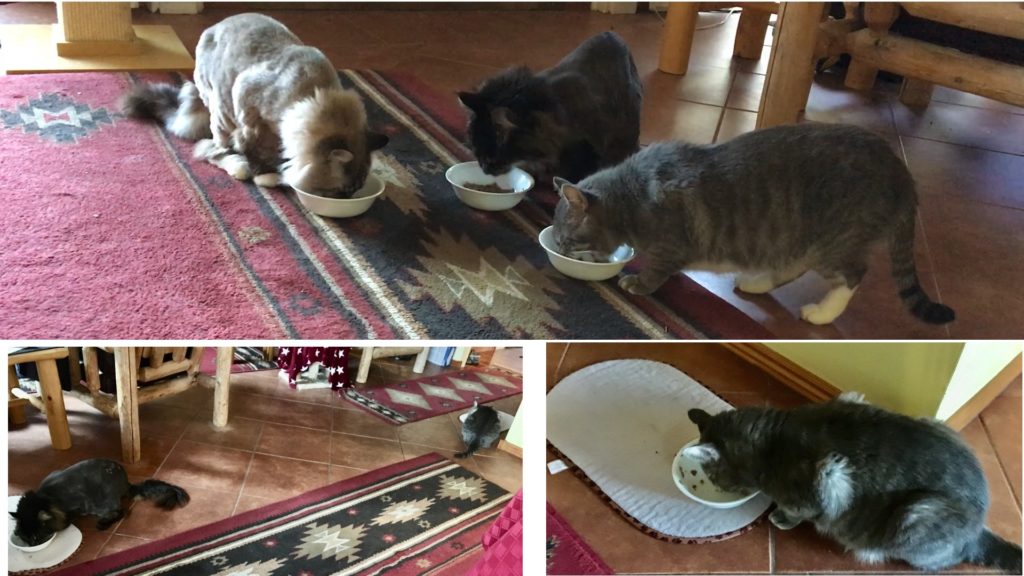
Although cats that belong to the same social group may seem comfortable eating next to each other, watch for indicators of distress: “scarf and barf”, aggression, and standing while eating.
What to do with Water…
- Wide, flat dishes mimic the puddles and water sources where cats can monitor for things behind them.

A pie plate has been repurposed as a cat water dish. Water is greenish due to a dental additive. - Wide water dishes don’t interfere with the whiskers.
- Water bowls in more than one place in the house gives kitty more opportunity to drink. This is especially important when feeding dry cat food and to avoid competition in multi-cat households.
Things to consider…
- Canned food can provide a lot of your cat’s water needs
- Water fountains for cats are popular – there are many styles. However, there are cats that prefer drinking from a dish or a dripping faucet
- Cats have receptors on their tongues that let them know when they are drinking water – they may prefer filtered water (See What does my cat taste?)



